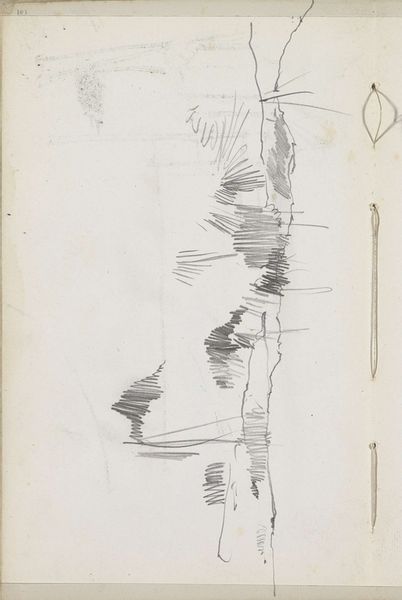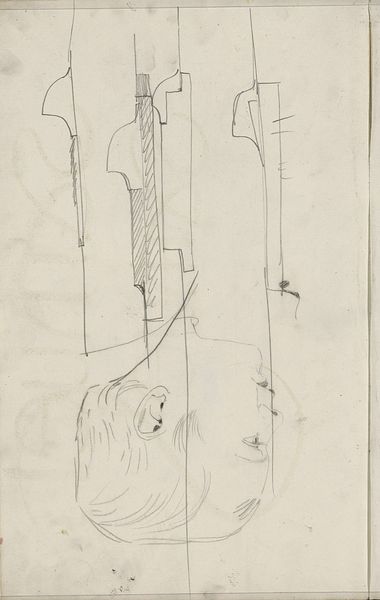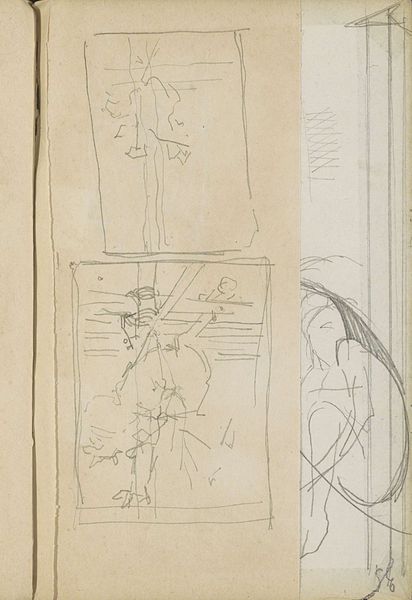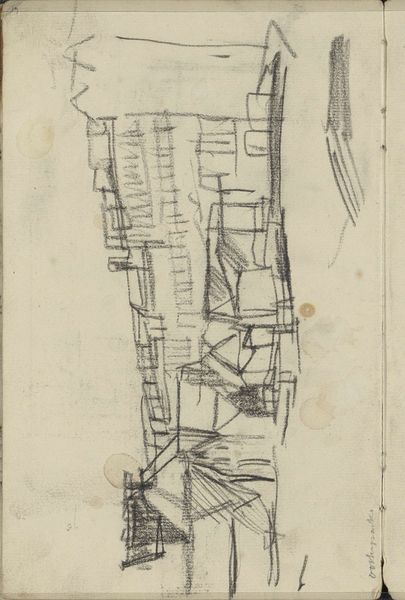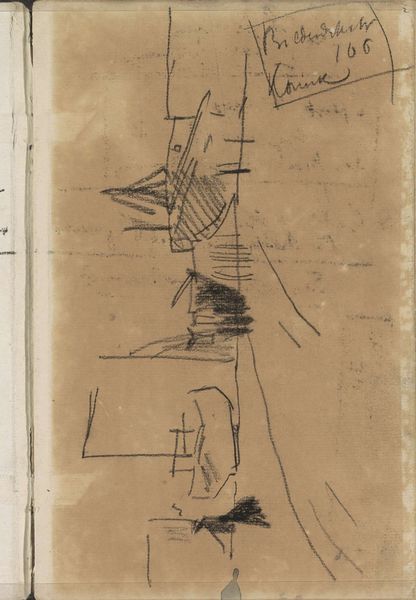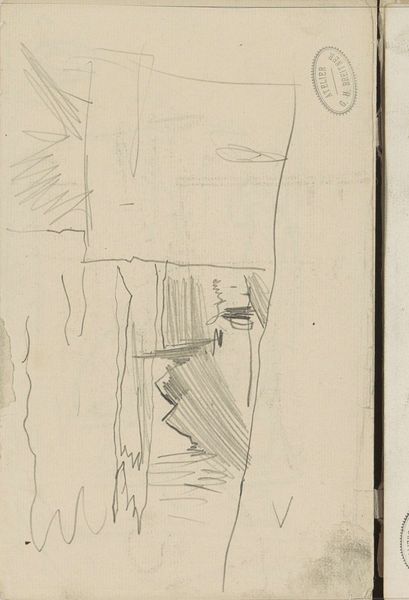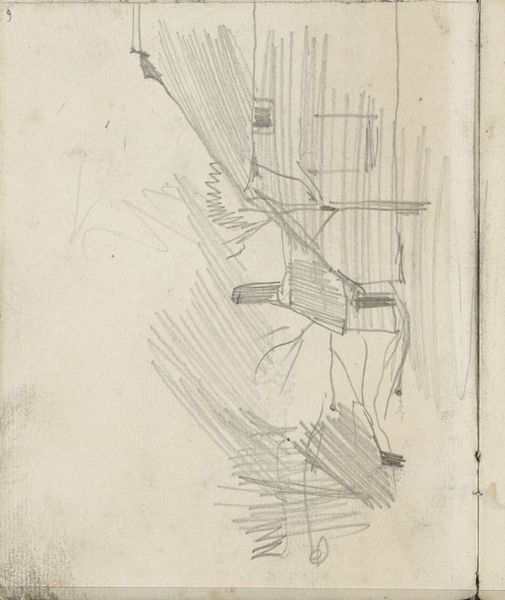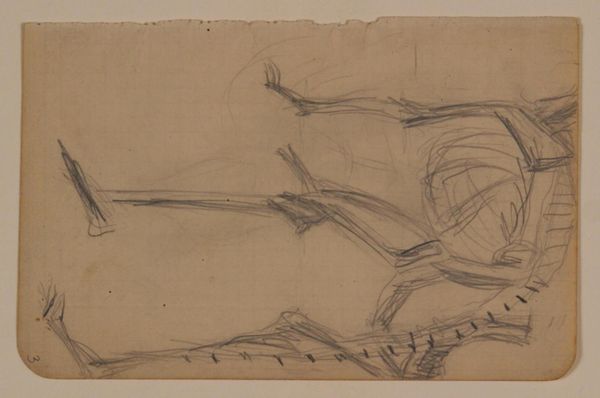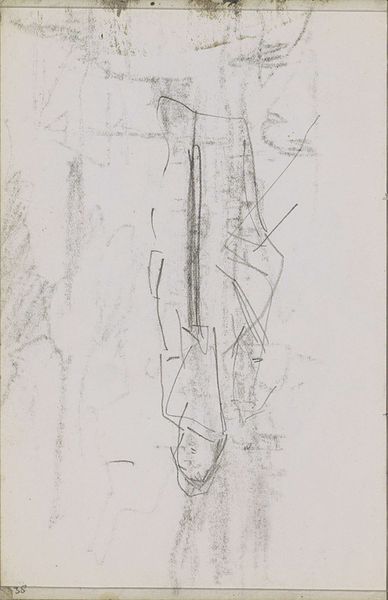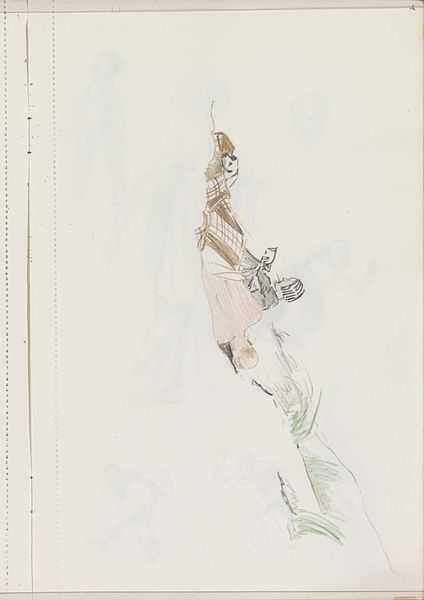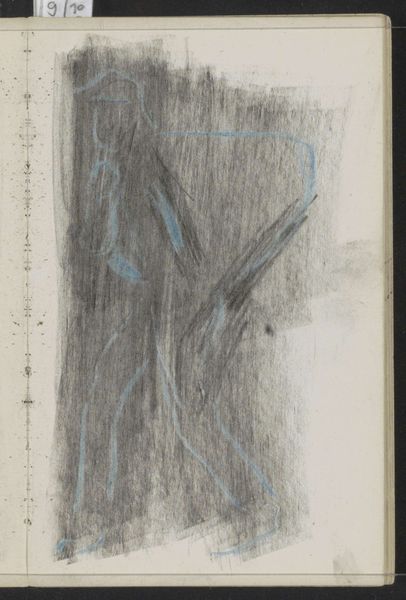
Design for a Stage Set at the Opéra, Paris 1830 - 1890
0:00
0:00
drawing, print, pencil
#
drawing
# print
#
pencil
#
cityscape
#
academic-art
Dimensions: sheet: 10 13/16 x 5 1/4 in. (27.4 x 13.4 cm)
Copyright: Public Domain
This set design for the Paris Opéra, created by Eugène Cicéri in the 19th century, presents a skeletal architecture that speaks volumes through its voids. The soaring, pointed arches evoke a sense of Gothic aspiration, reminiscent of the great cathedrals that sought to touch the heavens. Such architectural forms have long been laden with spiritual and emotional weight. Think of the triumphal arches of ancient Rome, repurposed through the Renaissance to symbolize power and divine right. Here, the arches become fragmented, almost ghostly, suggesting a stage for dramas of the human condition, framed by the echoes of history. The grid underlying the sketch imposes order, yet the organic, flowing lines above hint at the chaos and passion that opera so often portrays. This tension between structure and emotion invites us to consider the stage as a space where the subconscious finds expression, where collective memories are enacted and re-lived. The stage is not only a setting, but a mirror reflecting our innermost selves through art.
Comments
No comments
Be the first to comment and join the conversation on the ultimate creative platform.
